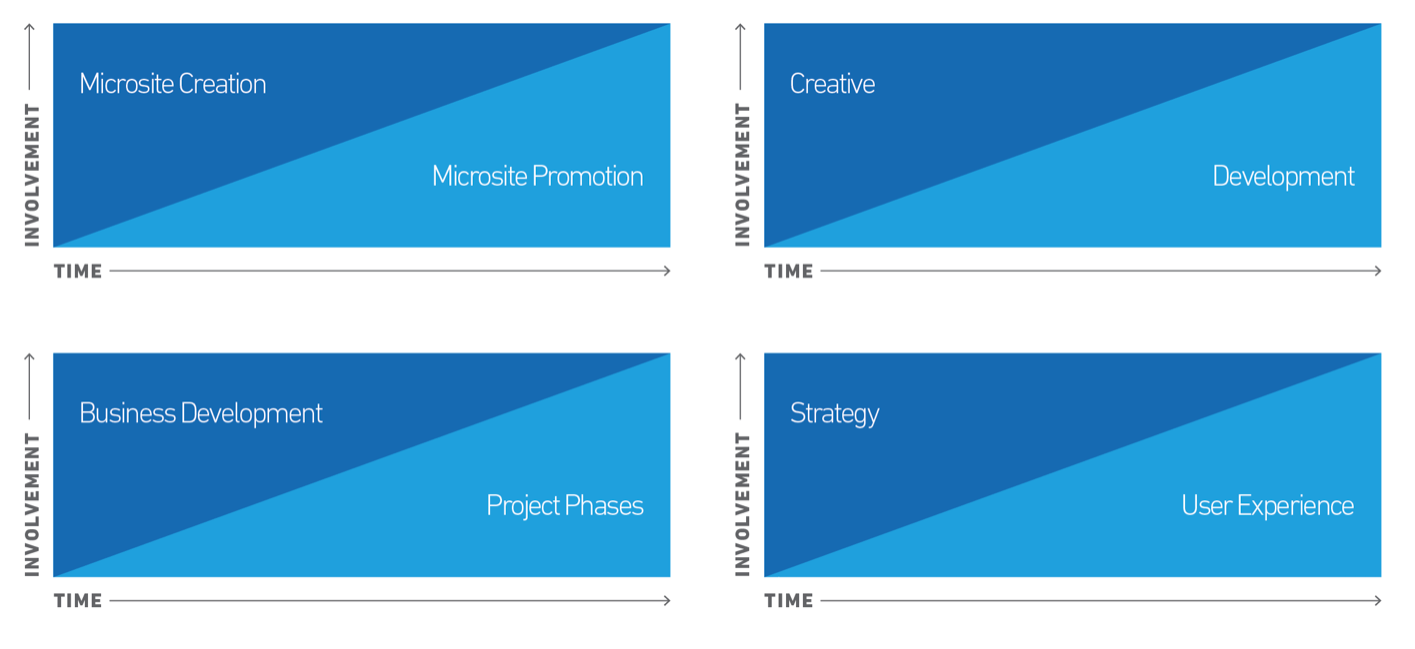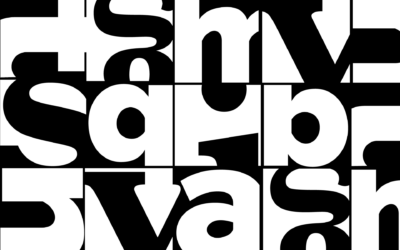Within organizations, silos have a natural tendency to perpetuate themselves. And the same goes for collaboration, too, which is reinforced by the words of Home Depot CEO, Frank Blake, who said: “You get what you celebrate.”
So for Look Listen, the celebration of cross-functional collaboration happens through a model we’ve used since our founding. We call it the Wedge Model, and we use it to illustrate the collaborative efforts of our teams as they navigate agency work, everything from digital projects, scopes and budgets, and client relationships themselves.
Instead of passing work from one team to another, we involve other practice areas in the creation of the idea, so that when it’s their turn to lead the charge, there aren’t any surprises. It creates a relay race effect: The person receiving the baton is already running when it’s their turn.
Wedge Model Examples

We’ve found that this model works well in several different co-creation situations. For instance, the model works beautifully with two practice areas like creative and code teams are working on a website. It also works well with larger groups working together on a multi-layered project. For instance, the larger group creating a microsite and the group promoting the microsite. What this does is create shared project ownership and accountability instead of an assembly line—which doesn’t work for agencies.
A semi-famous Harvard Business Review article from a couple years ago comes to a conclusion about the nature of cross-functional teams (upon which agencies are built) nearly 75% of them are dysfunctional, and they fail in at least three of five areas:
- Sticking to budget
- Staying on schedule
- Adhering to scope
- Meeting customer expectations
- Maintaining alignment with company goals
According to the article:
“Projects that had strong governance support — either by a higher-level cross-functional or by a single high-level executive champion — had a 76% success rate, according to our research. Those with moderate governance support had a 19% success rate.”
The author was able to identify some best-practices of project governance in the article, and it’s worth a read. However, the Wedge Model can also address these common areas that cause cross-functional teams to become dysfunctional and projects to begin to fall into jeopardy. And, because having a single executive-level champion on a project isn’t always possible, the Wedge Model helps unify the team around shared goals and outcomes.
Sticking to the budget
Involving operations and finance in the transfer process between business development and project kickoff can help galvanize budgets, break them down properly, and communicate them to the project team efficiently.
Staying on schedule
Because project schedules inevitably shift and fluctuate, having the development team be familiar with the full project scope and specifics of their activities, for example, helps relieve pressure when additional time is needed for creative approval.
Adhering to scope
By bringing the media team in during the early stages of a project, two outcomes are possible. First, the preparations they make for promotion can help keep the project within scope as a coordinated effort from a single strategy. Second, if scope changes, they’re already familiar with the project and reasons for the change, reducing the time and effort they need to adjust to the changes in strategy.
Meeting customer expectations
When client relationships are built through business development, it’s important that they stay highly visible at the beginning of the project and become less influential throughout the project. Their voice and presence can not only help the entire agency team deliver above and beyond the customer’s expectations, they are also able to transfer trust (not simply scope) from the client to the project team.
Maintaining alignment with company goals
Creating and maintaining alignment with company goals—whether that’s the client or the agency itself—is a collaborative effort. When goals are met, the entire ecosystem becomes healthier and benefits.
As companies get better at cross-functional collaboration, the wedge will model become more ubiquitous throughout the communication efforts of the entire organization. Think about how the Wedge Model can improve your communication. Is there an instance in which involving another person sooner could have saved time or money? Think about a signature project you have coming up: Who should be involved at the very beginning? Is there a subject-matter expert who can provide guidance at the start?
We take it even further with Connected Cohorts™ by involving strategy and execution teams with customers and influencers in order to support the combined efforts of both sales and marketing teams. At a macro level, we’re not only improving collaboration, we’re creating conditions for innovation, market expansion, and a thriving brand ecosystem.
You can read more about Connected Cohorts™ here. Interested in learning more about Look Listen? Drop us a line, anytime.
Photo by Josh Calabrese on Unsplash





